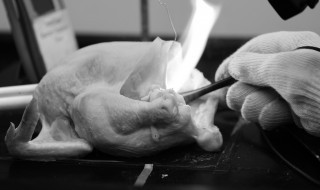 To ensure the safety of dental surgical procedures, a new study found the use of suction to prevent combustion highly effective.
To ensure the safety of dental surgical procedures, a new study found the use of suction to prevent combustion highly effective.
The oxygen-enriched environment of surgical procedures increases the risk of fire.
As many as 600 operating room fires occur each year in the United States, despite a decline in the use of flammable anaesthetics.
A study (www.anesthesiaprogress.org, 2014) in the journal Anesthesia Progress replicated potential surgical fire conditions with a mechanical model in an oxygen-enriched environment.
The internal body cavities of chickens were used to simulate a patient’s oral cavity, and an electrosurgical unit was used as the ignition source.
The study tested the hypothesis that high-volume dental suction might draw off enough oxygen to delay or inhibit the onset of combustion.
Ventilation of oxygen in patient oral cavities or evacuation by high-volume suction may help decrease the risk of fires.
The current study conducted 41 trials to test its hypothesis; 20 employed suction, and the rest did not.
Among the trials, three types of combustion events were noted: an audible pop, a flash of light, and full ignition.
All three conditions were observed in 11 of the 21 trials that did not include suction.
In trials where suction was used, there was no ignition at all in 18 of 20 cases.
In the two cases where ignition did occur, the fire was small.
All three combustion types were more likely to occur in the no-suction environment.
While not common, surgical fires can have fatal results.
Fire safety research has identified pooled, or trapped, oxygen around a patient’s tissue, under surgical drapes, and in the operating room environment.
Equipment leaks and administration of supplemental oxygen, such as through a nasal cannula, increases the risk of fire.
Lasers and electrocautery tools can provide sources of ignition.
The head, neck, and upper torso are the areas most often affected by surgical fires.
Greater fire safety awareness and knowledge of prevention techniques can help establish a safer dental environment.
Surgical fires have been deemed completely preventable.
The research in this article suggests that adequate removal of the source of oxidation from the surgical site may be key to eliminating fires.
References
http://anesthesiaprogress.org/doi/full/10.2344/0003-3006-61.4.155 (2014) retrieved 13/01/14


